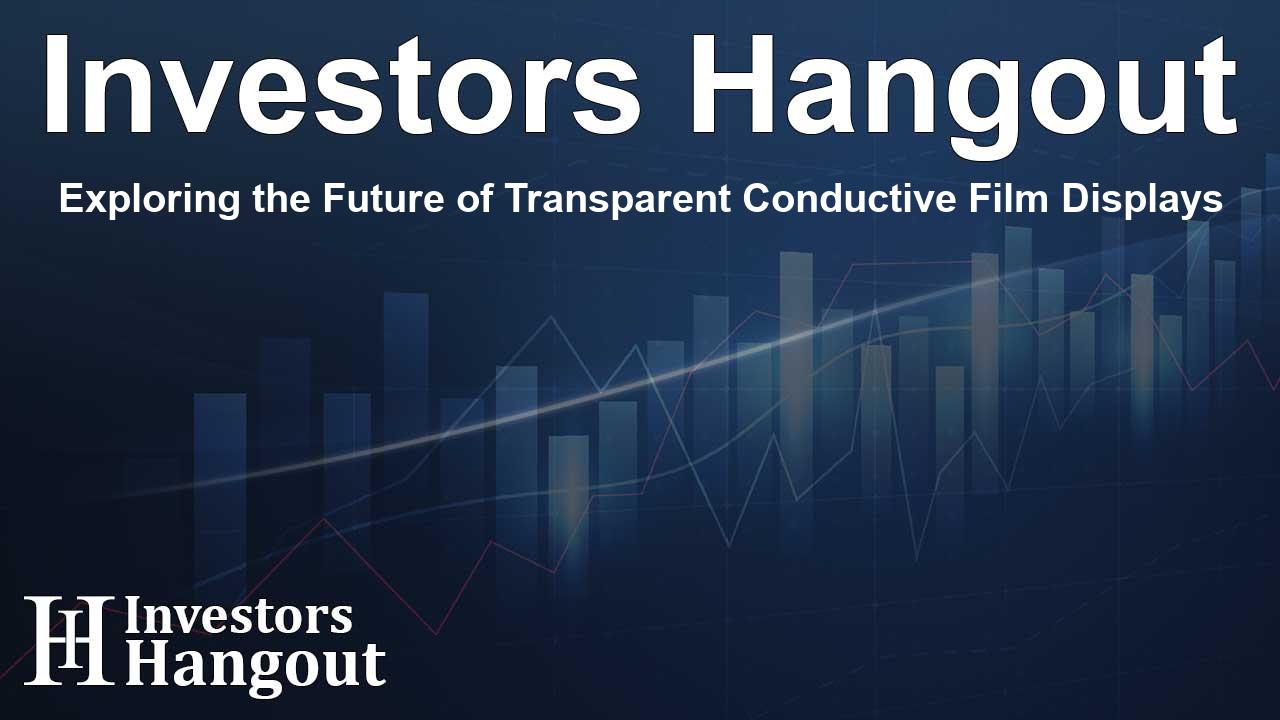Exploring the Future of Transparent Conductive Film Displays

Overview of Transparent Conductive Film Displays
Transparent Conductive Film (TCF) Displays utilize a delicate, transparent conductive layer that supports touch functionality while preserving remarkable optical clarity. These films are pivotal in numerous applications, such as touchscreen displays, flexible electronics, OLEDs, and smart windows. They act as an electrode layer, allowing the transmission of electrical signals without compromising visibility. The most commonly utilized material is Indium Tin Oxide (ITO) due to its exceptional conductivity and transparency; however, it has limitations concerning flexibility, prompting the exploration of alternative materials for new technologies.
Market Growth and Adoption
The global transparent conductive film display market is on the brink of significant expansion, driven by the rising adoption of touch-based interfaces and declining smartphone costs. These films are lauded for their slim design, low power consumption, minimal reflection, flexibility, and durability—qualities essential for enhancing modern electronic devices' performance. Such characteristics are contributing to an increased demand for energy-efficient and high-performance gadgets, further stimulating market growth.
Impact of Wearable Technology
Rising Popularity in Wearable Devices
The growing popularity of wearable devices is intensifying the need for transparent conductive films. TCFs are integral in creating interactive and flexible displays for wearables, significantly improving functionality and user experience. Consumers are increasingly seeking advanced and feature-rich wearables, positioning TCFs as crucial components in the development of innovative displays that deliver superior performance and sleek, lightweight designs. The ubiquity of wearable technology in daily life fuels ongoing market growth for transparent conductive films.
Innovative strides in material development are occurring, with researchers creating ultrathin conductive films measuring just 10 nanometers thick. These films offer an ideal combination of electrical conductivity, flexibility, and breathability, making them particularly suited for health-monitoring wearables.
Advancements in Smart Home Applications
Opportunities in Smart Home Innovations
Transparent conductive films present notable growth opportunities through their integration into smart home technologies. These films are revolutionizing user interaction with technology by enabling intuitive touch interfaces across various surfaces, such as smart mirrors and touch-controlled appliances. These advancements provide seamless control and enhanced functionalities that elevate the smart home experience to unprecedented levels.
As smart home devices continue to gain traction, TCFs are becoming essential for next-generation interfaces, providing touch-enabled surfaces that integrate smoothly into contemporary home aesthetics. They facilitate stylish designs while enhancing user experiences, supporting the demand for more personalized and connected living environments.
- In a recent development, 43% of households reportedly owned at least one smart home device in 2023. This figure is predicted to rise to 60% by 2027, mainly driven by the growing interest in touch-controlled technology and home automation, underscoring the importance of transparent conductive films in this trend.
Regional Insights
The Asia-Pacific region currently leads the global transparent conductive film display market due to rapid urbanization and infrastructure advancements. Emerging economies in this region are increasingly adopting smart city initiatives and enhancing digital signage and public display systems, which in turn boosts the demand for transparent conductive films. The gaming sector also contributes to this innovation, as large format displays utilize TCFs to create engaging user experiences.
National initiatives, such as "Make in India" and "Made in China 2024," are enhancing local production capabilities and promoting domestic manufacturing of sophisticated display technologies. For instance, China's 'Made in China 2024' strategy is set to cater to 80% of domestic requirements for advanced display technologies by 2030, significantly enhancing local innovation and reducing import dependency.
Market Dynamics and Competitive Landscape
The global transparent conductive film display market size was valued at USD 6.75 billion in 2024 and is projected to achieve USD 7.17 billion in 2025, potentially reaching USD 11.60 billion by 2033, with a CAGR of 6.20% during the period from 2025 to 2033.
The market segmentation encompasses various materials, including Indium Tin Oxide (ITO) on Glass and PET, as well as alternative options like Silver Nanotubes and Conductive Polymers. Among these, Indium Tin Oxide on glass remains the dominant player due to its superior electrical properties and transparency.
In terms of applications, smartphones take the lead in the global market share, followed by Notebooks, Tablets, PCs, and a range of other devices including TVs and OLED Lighting.
Recent Innovations in the Industry
A look at recent developments reveals exciting innovations. For instance, Lenovo has introduced a concept for a ThinkBook laptop featuring a 17.3-inch micro-LED transparent display. This forward-thinking design replaces traditional screens with a glass-like panel, opening up new user interaction possibilities. Additionally, collaborations such as that between Panasonic Industry and Meta Materials aim to facilitate the transparent conductive film market with innovative NANOWEB solutions, addressing applications in consumer electronics and the automotive industry.
Frequently Asked Questions
What is the current size of the transparent conductive film display market?
The market was worth approximately USD 6.75 billion in 2024 and is expected to grow significantly, potentially reaching USD 11.60 billion by 2033.
What materials are commonly used in transparent conductive films?
Common materials include Indium Tin Oxide (ITO) on Glass and PET, along with emerging options like Silver Nanotubes and Conductive Polymers.
How are transparent conductive films used in wearable technology?
TCFs are essential for creating flexible and interactive displays in wearable devices, enhancing functionality and user experience.
What regions lead the market for transparent conductive film displays?
The Asia-Pacific region dominates the market, driven by advancements in urbanization and smart city projects.
What recent innovations have been made in this field?
Recent innovations include Lenovo's new ThinkBook laptop with a transparent display and Panasonic Industry's partnership with Meta Materials to accelerate market growth.
About The Author
Contact Olivia Taylor privately here. Or send an email with ATTN: Olivia Taylor as the subject to contact@investorshangout.com.
About Investors Hangout
Investors Hangout is a leading online stock forum for financial discussion and learning, offering a wide range of free tools and resources. It draws in traders of all levels, who exchange market knowledge, investigate trading tactics, and keep an eye on industry developments in real time. Featuring financial articles, stock message boards, quotes, charts, company profiles, and live news updates. Through cooperative learning and a wealth of informational resources, it helps users from novices creating their first portfolios to experts honing their techniques. Join Investors Hangout today: https://investorshangout.com/
The content of this article is based on factual, publicly available information and does not represent legal, financial, or investment advice. Investors Hangout does not offer financial advice, and the author is not a licensed financial advisor. Consult a qualified advisor before making any financial or investment decisions based on this article. This article should not be considered advice to purchase, sell, or hold any securities or other investments. If any of the material provided here is inaccurate, please contact us for corrections.
